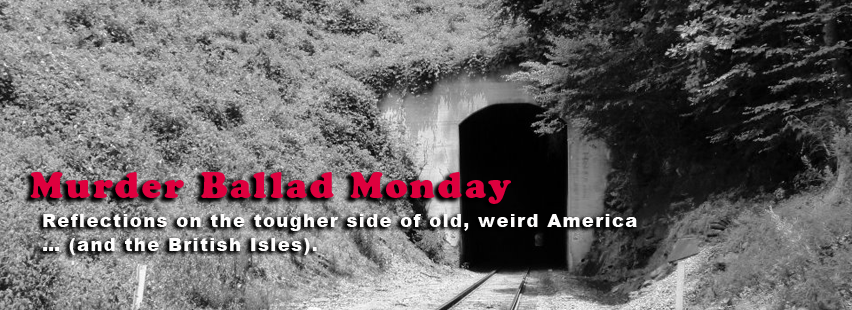“Don’t murder me …” – Dire Wolf

When I Awoke – Kristina Layton – used by kind permission of the artist – Check out her other artwork at Wagon Wheel Illustration!
“In the Timbers of Fennario…”
Today’s murder ballad dances merrily along borderlines with which we’ve become familiar in this blog; boundaries between celebration and fear, civilization and savagery, traditional and post-modern balladry – and of course that inscrutable passage between life and death. “Dire Wolf” is an unabashedly happy song in the voice of the ghost of a man murdered by a six hundred pound predator. As art, it was born in a glorious blaze of light during one of the Grateful Dead’s most creative periods, and it hit the smoky concert halls and hungry turntables of post-Summer-of-Love America while a serial killer stalked the Bay Area’s nighttime streets.
Folks say much online and in print about the song and the band during this period, and we don’t propose to repeat all that here. Our aim today is only to place the song gently in the living playlist we at Murder Ballad Monday hold dear.
It may not be a perfect fit, but you get to judge that for yourself…
Lyrics for the Grateful Dead’s “Dire Wolf”
“I sat down to my supper…”
Despite what I said in the introduction, it would be a mistake to tie the song’s inspiration to The Zodiac Killer. We’ll get to that bit in the next section. Robert Hunter, in a journal entry from July 29, 1996 that is no longer available online but is cited here, confirmed that the inspiration for “Dire Wolf” was not tied to any historical act of violence –
Dire Wolf card back – Kristina Layton – used by permission of the artist
The song “Dire Wolf” was inspired, at least in name, by watching the Hound of the Baskervilles on TV with Garcia. We were speculating on what the ghostly hound might turn out to be, and somehow the idea that maybe it was a Dire Wolf came up… We thought Dire Wolves were great big beasts. Extinct now, it turns out they were quite small and ran in packs. But the idea of a great big wolf named Dire was enough to trigger a lyric. As I remember, I wrote the words quickly the next morning upon waking, in that hypnogogic state where deep rooted associations meld together with no effort. Garcia set it later that afternoon.
In a 1986 interview for Relix magazine, Hunter also spoke about the ballad…
“The imagery occurred to me in a dream. I woke up and grabbed a pencil before I was entirely awake and wrote the whole song down. I think I managed to capture the quality of the dream by writing it down before I was wide awake.”
It’s clear then this is no traditional murder ballad, at least in the sense that it didn’t come into being for any of the standard reasons we can identify with such music. On the other hand, you’ll see that this song isn’t faking it. As for provenance, the larger creation story of “Dire Wolf” is documented and well-cited in an essay written by Light Into Ashes for the blog Grateful Dead Guide. It’s well worth the time if you want the story in detail. For our purposes today, a quick summary of its key points will suffice.

Garcia on pedal steel, Sargent Gym, Boston University – November 21, 1970 – Photograph by Jeff Albertson, University of Massachusetts Amherst Libraries Special Collections – fair use
It was May of 1969 and the Dead were in transition from their psychedelic ‘primal’ phase to the period of folk-country influence typified by the music on Workingman’s Dead and American Beauty. Hunter was living in large rural house with Jerry Garcia and Mountain Girl, and he wrote furiously in a sustained, hyper-creative state. That spring and summer he produced many of the lyrics that, with Garcia’s arrangement, would become some of the band’s best-known songs. The night of TV watching that Hunter mentioned seems to have happened sometime that month, and the song was fairly well set later the next day.
The Grateful Dead debuted “Dire Wolf” live on June 7, 1969 at the Fillmore West and by June 21 at the Fillmore East, Bob Weir was singing too and Jerry added his instantly recognizable pedal steel guitar, an instrument with which he had recently fallen in love. The Dead recorded the song the following February, and released it on Workingman’s Dead on June 14, 1970. In between the bookends of those dates, America passed through both Woodstock and Altamont, and the counterculture’s “high and beautiful wave” finally broke and began to recede. In the wake of that flood, the Grateful Dead played “Dire Wolf” consistently, if sparingly, for a total of 237 times before Jerry Garcia’s death in 1995. It still makes the lineup of the various post-Jerry incarnations of the band. You’ll see below that other musicians like the song as well.
It seems built to last.


